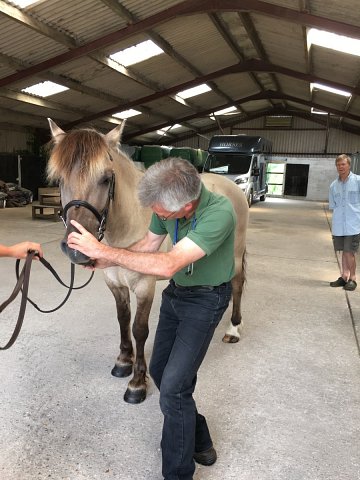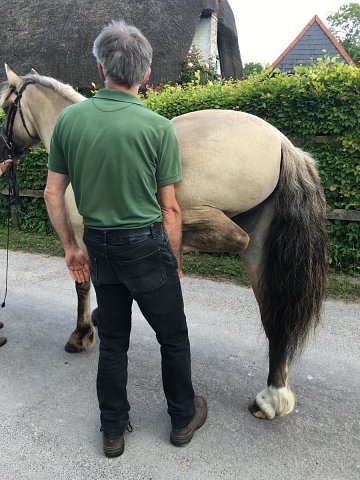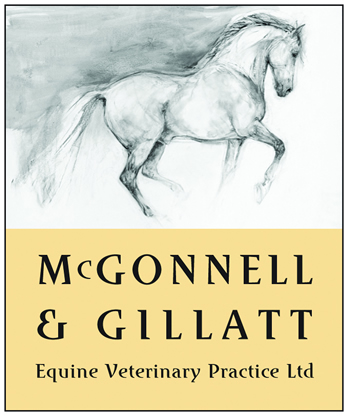Vettings - Pre-Purchase Examinations
The practice carries out impartial vettings of horses for pre-purchase and insurance purposes to a rigorous standard.
Pre-Purchase Examination
The aim of the Pre-Purchase Examination/Vetting is to carry out a thorough clinical examination on behalf of a potential purchaser to identify and assess factors of a veterinary nature that could prejudice the horse’s suitability for its intended use. Each pre-purchase examination is carried out on behalf of a specific prospective purchaser so that the opinion can be based on that purchaser’s individual needs and intended use of the horse.
A standardised clinical examination is performed. Its findings will be assessed by the veterinary surgeon, who will form an opinion as to their significance and any possible adverse implications for the prospective purchaser’s intended use of the horse.
The pre-purchase examination provides an assessment of the horse at the time of examination to help inform the potential purchaser’s decision whether or not to continue with their purchase.
It is not a guarantee of a horse’s suitability for the intended purpose.
For the full British Equine Veterinary Association / Royal College of Veterinary Surgeons information on vettings guidance, insurance and liability, please follow this link to the BEVA
THE EXAMINATION
Stage 1 - Preliminary examination

This is a methodical examination of the animal’s body to assess general appearance and condition. It includes examination of the teeth, the resting heart, the eyes by ophthalmoscope, the skin, the limbs and feet, and flexion of the limb joints to reveal pain or limitation of movement. The examination does not include examination of the inside of the prepuce (sheath), a detailed mouth examination with a speculum, a height measurement or any examination for pregnancy.
Stage 2 - Trotting up

The animal is walked and trotted on hard, level ground in order to detect gross abnormalities of gait and action. Flexion tests are performed at this stage placing the limb under tension for a set period before trotting the horse off to see if any lameness is present. The horse may also be lunged or trotted round on a hard surface at this point, if the vet considers it safe and appropriate. These tests often show up or exacerbate low grade underlying lameness not present at a straightforward trot up.
Stage 3 - Strenuous exercise
The animal is given sufficient strenuous exercise (1) to make it breathe deeply and rapidly so that any unusual breathing sounds may be heard, (2) to increase the action of the heart so that abnormalities may be more easily detected, and (3) to tire the animal so that strains or injuries may be revealed by stiffness or lameness after a period of rest. We recommend that the animal is ridden rather than lunged to examine any effects of the rider on the horses back or action.
Stage 4 - A period of rest and re-examination
The horse is allowed to stand quietly for a period. During this time the breathing and the heart are checked as they return to their resting levels. The identification drawing is often completed during this time, and a blood sample for storage is usually taken now.
Stage 5 - The second trot and foot examination
The horse is walked and trotted again, turned sharply and backed, in order to reveal abnormalities exacerbated by the strenuous exercise stage.
It is recommended that a blood sample is taken for storage (usually for 6 months) for possible future analysis to detect substances present in the horse’s system at the time of the examination that might have masked any factors affecting the horse’s suitability for the purchaser’s intended use. This is done at our professional indemnity insurer’s request.
Each Vetting can take from 1½ to 2 hours.
In addition we can also carry out X-rays, endoscopic examinations and tendon scans if required.
We recommend a full Five Stage Vetting for any purchase of a horse or pony. In exceptional circumstances we can carry out a Two Stage Vetting but we require you to sign a disclaimer form explaining that this is a limited examination and some problems may be missed.
